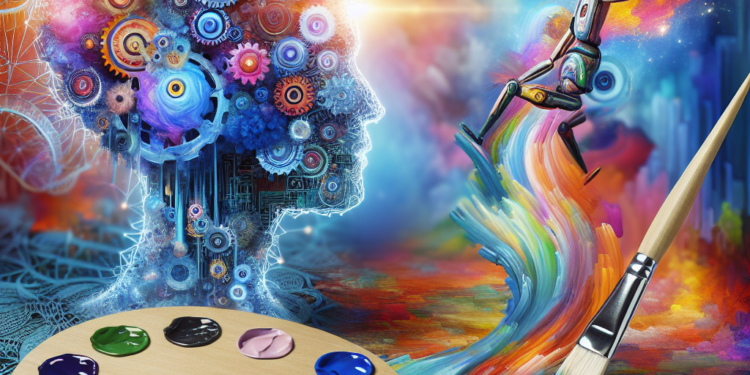Artificial intelligence has made significant advancements in recent years, and one of the most intriguing developments is its ability to create stunning art masterpieces. Thanks to the power of machine learning and neural networks, AI has been trained to analyze and replicate the styles of famous artists, resulting in works that are not only visually captivating but also thought-provoking.
One of the most well-known examples of AI-generated art is the “Portrait of Edmond de Belamy” by the French art collective Obvious. The portrait was created using a Generative Adversarial Network (GAN), a type of AI algorithm that consists of two neural networks – a generator and a discriminator. The generator creates images based on training data, while the discriminator evaluates the images and provides feedback to the generator. Through this iterative process, the AI is able to generate realistic-looking images that mimic the style of the training data.
The “Portrait of Edmond de Belamy” was created using a dataset of portraits from the 14th to 20th centuries, which the AI algorithm used to learn and generate its own unique interpretation. The result is a striking portrait that looks like it could have been created by a human artist, complete with intricate details and a sense of depth and emotion.
Another example of AI-generated art is the “Nightmare Machine” project by MIT Media Lab, which uses deep learning algorithms to generate scary images based on input from users. By analyzing thousands of images of creepy creatures and haunted locations, the AI is able to create its own terrifying artworks that evoke a sense of fear and unease. The project highlights the versatility of AI in creating art that can evoke different emotions and reactions from viewers.
AI has also been used to create abstract artworks that push the boundaries of traditional art forms. Google’s DeepDream project, for example, uses neural networks to enhance and modify images in unexpected ways, resulting in psychedelic and surreal compositions. By feeding the AI algorithm with an image and letting it interpret and manipulate the visual elements, artists can create unique and visually stunning artworks that challenge our perceptions of reality.
The advancements in AI-generated art have sparked a debate about the role of AI in the creative process. Some argue that AI can never replace the creativity and imagination of human artists, while others see it as a powerful tool that can enhance and inspire new forms of artistic expression. Regardless of where one stands on this issue, there is no denying the impact that AI-generated art has had on the art world.
AI has the potential to revolutionize the way we create and consume art, opening up new possibilities for artists and audiences alike. By leveraging the power of machine learning and neural networks, artists can explore new artistic styles and techniques that were previously unimaginable. AI-generated art has the ability to transcend cultural and artistic boundaries, creating works that are truly boundary-breaking and groundbreaking.
As AI continues to evolve and improve, we can expect to see even more stunning art masterpieces created by machines. From realistic portraits to abstract compositions, AI-generated art is pushing the boundaries of what is possible in the world of art. Whether you are a traditionalist who values the human touch in art or a technophile who embraces the possibilities of AI, there is no denying the impact that AI is having on the art world. It is an exciting time to be an art lover, as we witness the birth of a new era of artistic expression driven by artificial intelligence.













